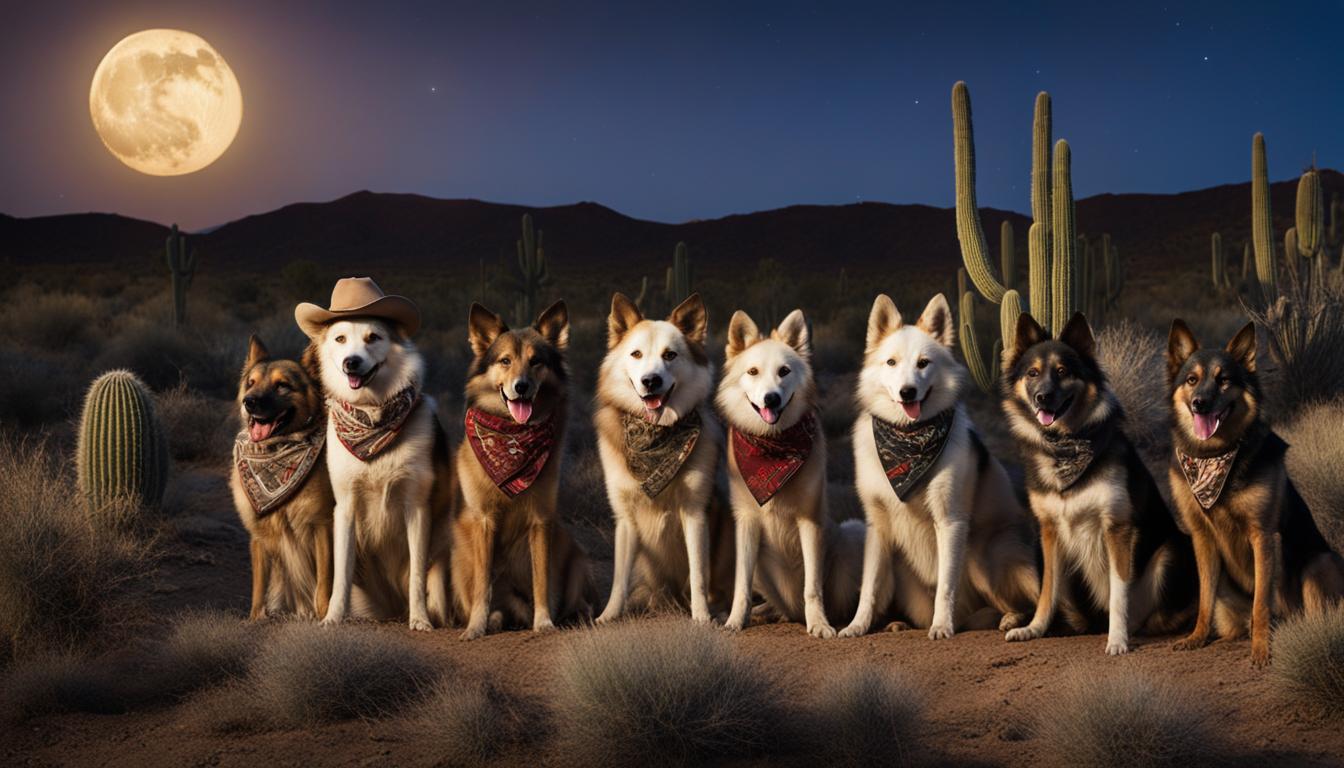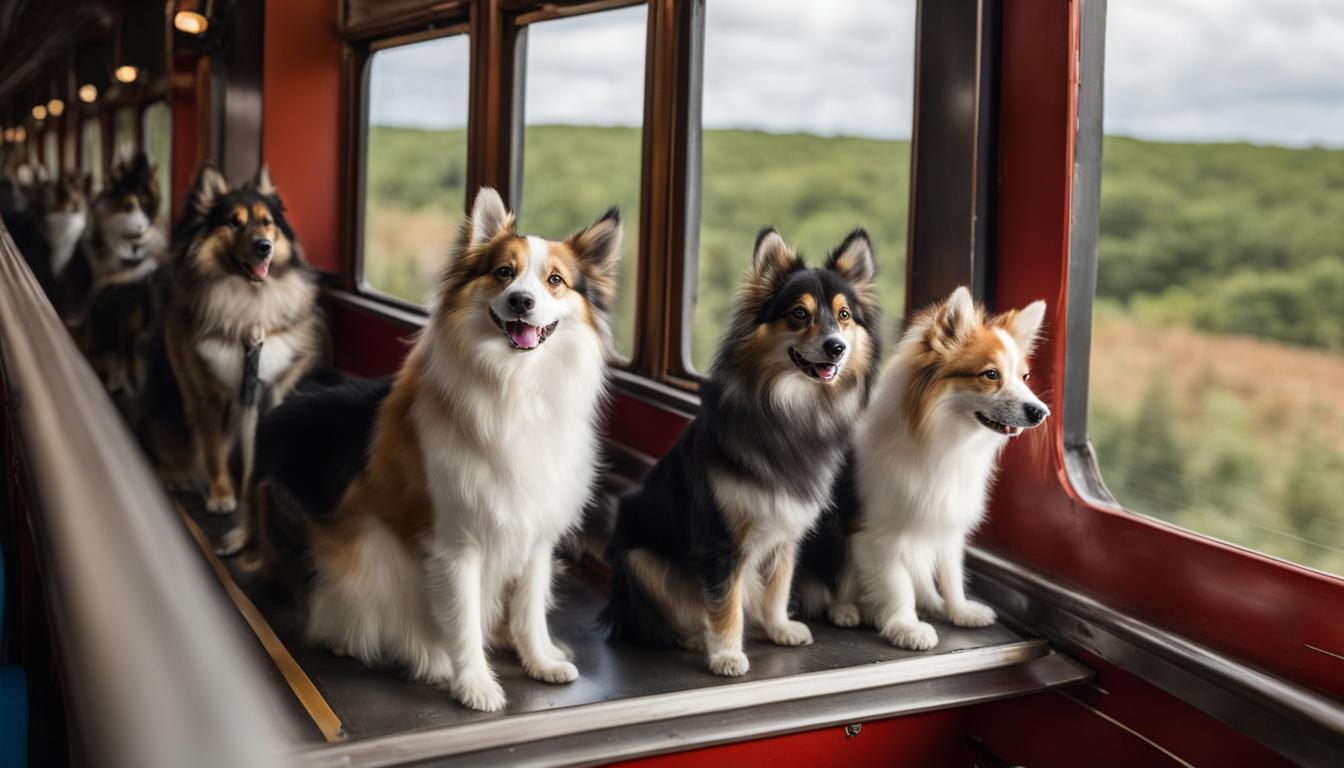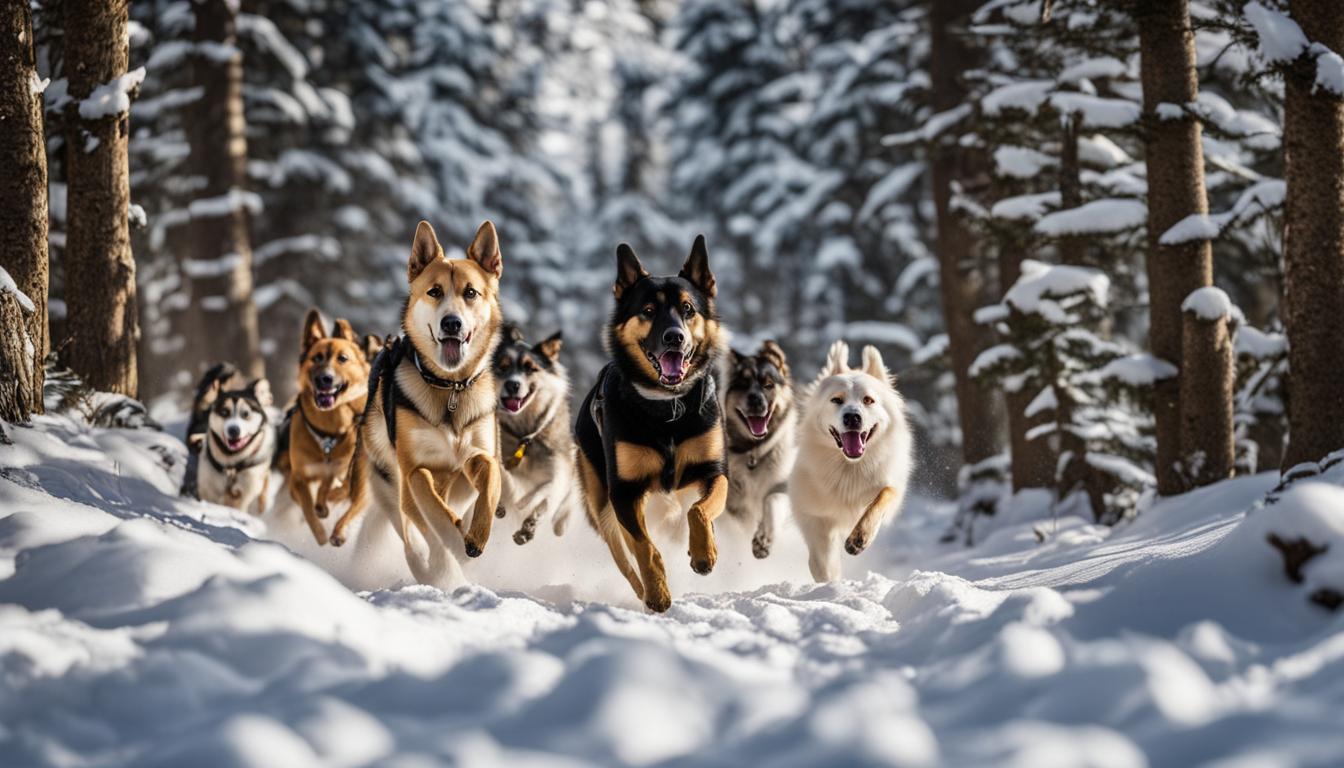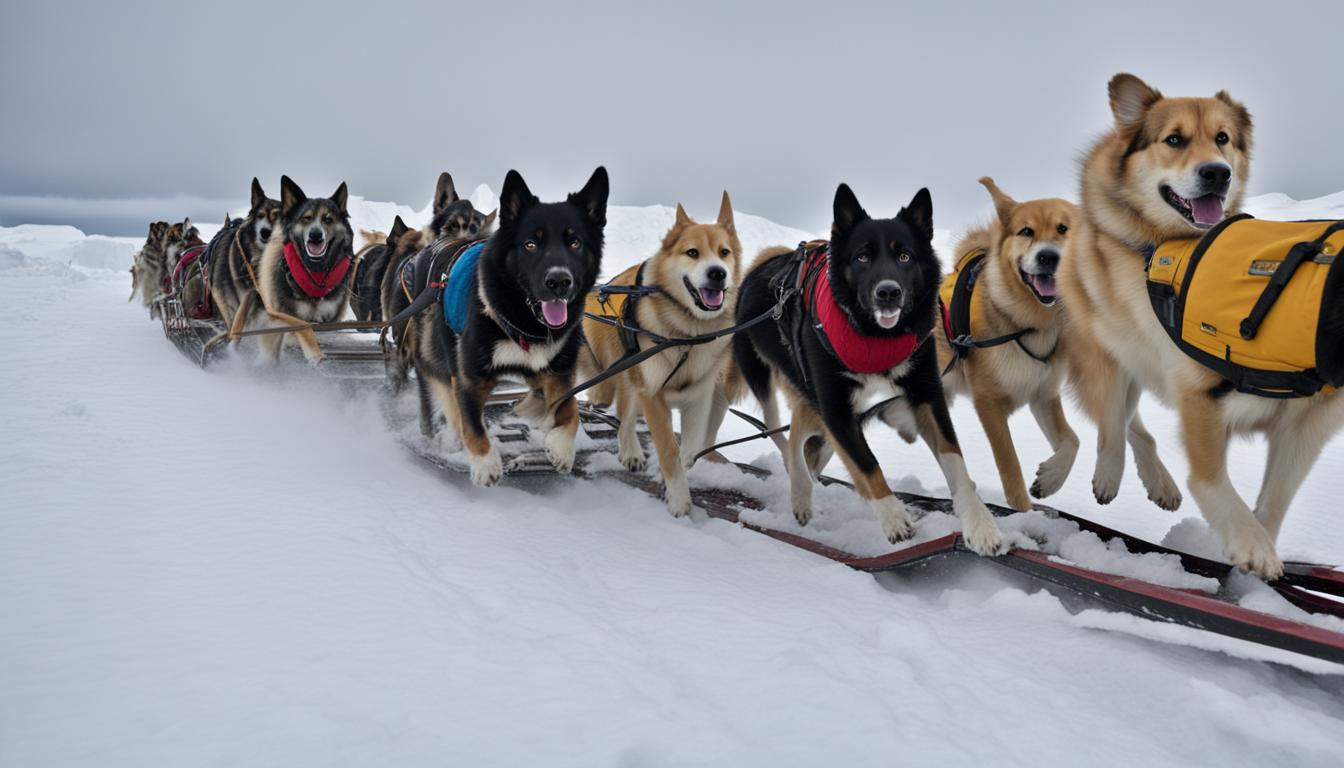Did you know that dogs have a rich history and have played a significant role in shaping civilizations? Join us on an adventure as we delve into the intriguing world of Wild West dogs. From their mysterious origins to their incredible abilities, there’s so much to uncover about these remarkable creatures.
Key Takeaways:
- Wild West dog training tips can help you better understand and communicate with your furry companion.
- Choosing the right Wild West dog collar is essential for both style and functionality.
- Dogs have a fascinating evolutionary history, starting with their scavenging behavior near human settlements.
- Wild dogs belong to the Canidae family, which includes various species like wolves, foxes, and jackals.
- Labrador Retrievers are among the most popular dog breeds, known for their friendly nature and intelligence.
Wild Dog Species and Classification
Wild dogs belong to the dog family, Canidae, which includes a diverse range of species. These canids are found on almost every continent, with the exception of Antarctica. The family Canidae comprises 35 recognized species, including wolves, foxes, and jackals. Some of the well-known wild dog species include the gray wolf, coyote, red fox, African wild dog, and golden jackal.
One of the most fascinating aspects of the wild dog family is the close relationship between wild dogs and domestic dogs. The domestic dog, which is typically considered a subspecies of the gray wolf, is also a member of the Canidae family. This connection highlights the evolutionary journey of dogs, from their wild ancestors to the beloved companions we know today.
It’s important to note that the classification of dog species is an ongoing field of research, subject to changes and updates as scientists continue to study and learn more about these incredible animals. The DNA evidence and extensive research have provided valuable insights into the origins and diversity within the dog family. As our understanding of wild dog species deepens, new discoveries may emerge, challenging our existing classifications.
Wild Dog Species Comparison
| Species | Continent | Distinctive Features |
|---|---|---|
| Gray Wolf | North America, Eurasia | Large, pack-hunting carnivore |
| Coyote | North and Central America | Adaptable scavenger, known for its distinct howl |
| Red Fox | Eurasia, North America | Adaptable omnivore with a beautiful red coat |
| African Wild Dog | Africa | Social hunter with unique coat patterns |
| Golden Jackal | Eurasia, Africa | Predator with golden-colored fur |
The diversity of wild dog species within the Canidae family showcases the remarkable adaptability and evolutionary success of dogs. From the expansive territories of the gray wolf to the urban habitats of the red fox, wild dogs have thrived in a wide range of environments. These species, with their unique characteristics and behaviors, contribute to the rich tapestry of the natural world.
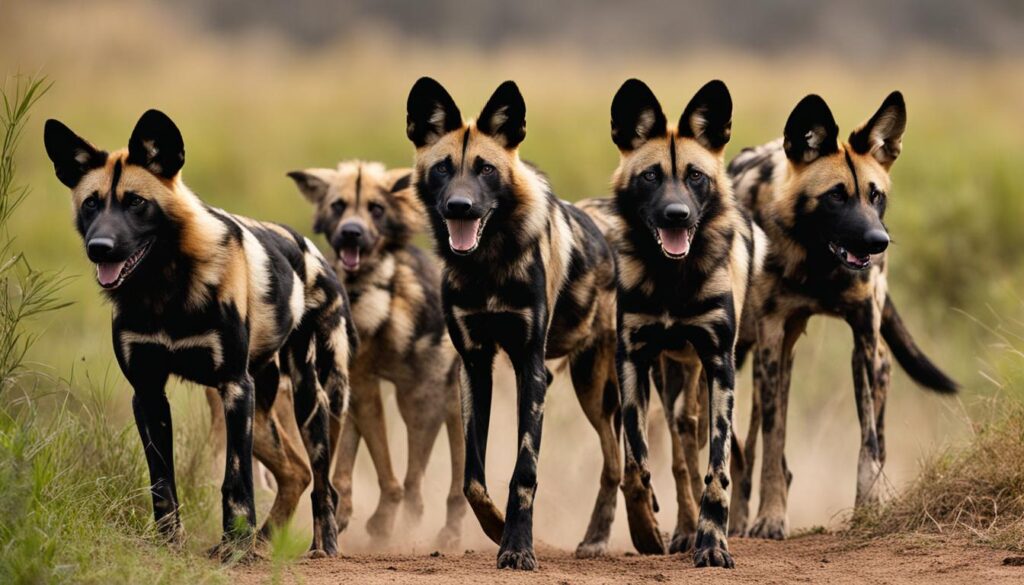
By understanding the classification and characteristics of wild dog species, we can gain a deeper appreciation for the complexity and diversity of the dog family. Their presence on different continents and their ability to adapt to various environments highlight their resilience and evolutionary prowess. Whether it’s the fierce hunting skills of the African wild dog or the resourcefulness of the coyote, each species has its own fascinating story to tell within the larger narrative of the wild dog family.
Fun Facts about Dogs
Did you know that the Labrador Retriever has been one of the most popular breeds on the AKC’s list for a long time? Their adorable faces and friendly personalities make them a favorite among dog lovers. But that’s not the only fascinating thing about dogs!
One remarkable fact is that a dog’s nose print is as unique as a person’s fingerprint. It’s a special identifier that sets them apart. Speaking of their noses, dogs have an incredible sense of smell. They can detect scents that are undetectable to us, thanks to their amazing 300 million receptors in their noses, compared to our mere 5 million. That’s why they excel in tasks like search and rescue, bomb detection, and even sniffing out specific diseases.
Ever wondered if dogs dream? Well, they do! Just like humans, dogs experience rapid eye movement (REM) sleep, which is when dreams occur. Puppies and senior dogs tend to dream more frequently than adult dogs. So, the next time you see your furry friend twitching or making cute noises while sleeping, they’re probably chasing squirrels in their dreams.
Here’s a fun fact that showcases the deep bond between dogs and their humans: 70% of people sign their dog’s name on their holiday cards. It’s a testament to the love and companionship that dogs bring into our lives. And speaking of their incredible senses, dogs’ noses can even sense heat and thermal radiation. This explains why blind or deaf dogs can still navigate and hunt effectively using their extraordinary olfactory abilities.
FAQ
What is the origin of dogs?
Through DNA evidence, scientists are suggesting that dogs may have originated in the highlands of Papua New Guinea, with the singing dog of New Guinea believed to be the mother of all dogs.
How did dogs play a role in early human settlements?
Dogs were drawn to areas with human settlements where they scavenged on garbage and waste, providing valuable insights into their evolution. This scavenging behavior led to changes in the wolf population and eventually led to the formation of the protodog.
How many species of wild dogs are there?
There are 35 recognized species of wild dogs, including wolves, foxes, jackals, and the domestic dog.
What are some well-known species of wild dogs?
Some well-known species of wild dogs include the gray wolf, coyote, red fox, African wild dog, and golden jackal.
How many receptors do dogs have in their nose compared to humans?
Dogs have as many as 300 million receptors in their nose, compared to a human’s 5 million, giving them an incredible sense of smell.
Can dogs dream?
Yes, dogs are known to dream. Puppies and senior dogs tend to dream more frequently than adult dogs.
What percentage of people sign their dog’s name on holiday cards?
Approximately 70% of people sign their dog’s name on their holiday cards, showing the important role dogs play in our lives.
How do dogs’ noses sense heat and thermal radiation?
Dogs’ noses can sense heat and thermal radiation, which explains why blind or deaf dogs can still hunt.

